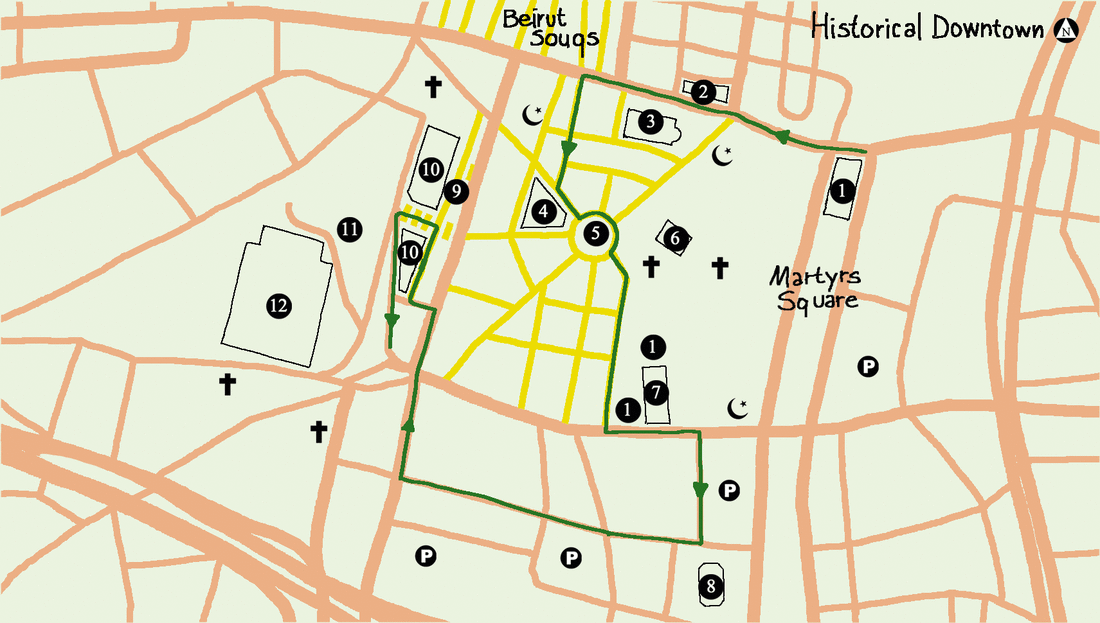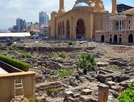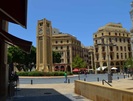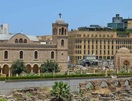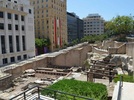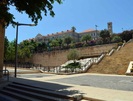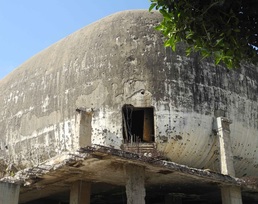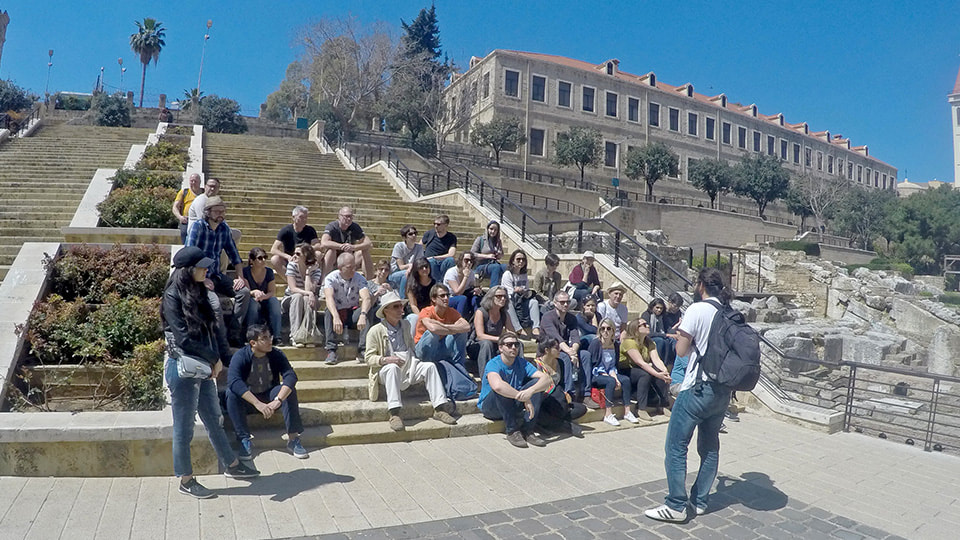
Traces of Beirut before the Civil War, going all the way back to Roman times, are still visible in the downtown area. To explore these, one could follow the walking route as indicated below.
It is interesting to realize that back in those days this area consisted of very small, dead-end streets and courtyards occupied by families, while the current wide streets are mainly functioning as public areas.
Copyright by Living Lebanon
1. Roman Ruins. These ruins probably are the leftovers of a caravanserail, and were much closer to the sea than nowadays.
2. Beirut Municipality. Serving as Beirut’s city hall, with several shops on the ground floor, this building dates from the late Ottoman period (1920s).
3. Al-Omari Mosque (Grand Mosque). This small and originally Byzantine church, in turn built on the ruins of Roman thermal baths, was converted into a mosque in 635 and became the Cathedral of St John under the Crusaders in 1115. It was turned back into a mosque by the Mamluks in 1291.
4. Parliament Building. Intended to serve as a library, this building was constructed in 1933.
5. Place de Etoile (Nejmeh Place) and Maraad Street. This square with its 1933 Art Deco clock tower - sponsored by Rolex - was the heart of the French Mandate in Beirut. This French area replaced the old Ottoman city and Beirut’s old souqs. After the Civil War, the square was reconstructed stone by stone and brought back to its appearance during French times. Due to security reasons, the streets there are closed for traffic and therefore ideal as playground for kids.
6. St Elie Cathedral. With the French being promoters of Christianity, it was decided to leave this 18th-century church and the below St Georges Maronite Church intact. This is how they became the reason for having only six of the planned eight streets running from the square.
7. St Georges Maronite Church (1888-1894). See 6 above.
8. Beirut City Center (the Egg). You probably wonder what this big grey egg shaped construction is doing there. This building, constructed between 1965 and 1968 was designed by Joseph Philip Karam as part of the biggest multi-functional shopping center in the Middle East. Hosting the largest movie theatre ever, this severely damaged ‘Le Grand Theatre’ has been empty for over 35 years.
9. Bank Street. This is one of the only downtown streets not ruined by the Civil War; architecture from the 1950s can still be found there.
10. Roman Baths. These remains of Roman baths were only discovered in late 1960 and underwent further excavation and restoration around the 1990s.
11. Ottoman Clock Tower. Facing the French clock tower on Place de Etoile, this Hamidieh Clock Tower dates from 1897 and indicated the mandatory Muslim prayer times. The clock is one of three similar ones set into high towers, with the other two located in Tripoli and Haifa.
12. The Grand Serail Building. Built by the Ottomans as military barracks and headquarters in 1840-1894 and later the home of the French Governor, this Governmental Palace now is the office of Lebanon’s prime minister. It is one of the few Ottoman palaces that survived the anti-Turkish battle during World War I. Throughout the Civil War, the building was subject to bombardments and most of its parts, the ground floor and the exterior walls excepted, were burnt. In 1998, it was brought back to life by a huge reconstruction initiated by Rafiq Hariri.
2. Beirut Municipality. Serving as Beirut’s city hall, with several shops on the ground floor, this building dates from the late Ottoman period (1920s).
3. Al-Omari Mosque (Grand Mosque). This small and originally Byzantine church, in turn built on the ruins of Roman thermal baths, was converted into a mosque in 635 and became the Cathedral of St John under the Crusaders in 1115. It was turned back into a mosque by the Mamluks in 1291.
4. Parliament Building. Intended to serve as a library, this building was constructed in 1933.
5. Place de Etoile (Nejmeh Place) and Maraad Street. This square with its 1933 Art Deco clock tower - sponsored by Rolex - was the heart of the French Mandate in Beirut. This French area replaced the old Ottoman city and Beirut’s old souqs. After the Civil War, the square was reconstructed stone by stone and brought back to its appearance during French times. Due to security reasons, the streets there are closed for traffic and therefore ideal as playground for kids.
6. St Elie Cathedral. With the French being promoters of Christianity, it was decided to leave this 18th-century church and the below St Georges Maronite Church intact. This is how they became the reason for having only six of the planned eight streets running from the square.
7. St Georges Maronite Church (1888-1894). See 6 above.
8. Beirut City Center (the Egg). You probably wonder what this big grey egg shaped construction is doing there. This building, constructed between 1965 and 1968 was designed by Joseph Philip Karam as part of the biggest multi-functional shopping center in the Middle East. Hosting the largest movie theatre ever, this severely damaged ‘Le Grand Theatre’ has been empty for over 35 years.
9. Bank Street. This is one of the only downtown streets not ruined by the Civil War; architecture from the 1950s can still be found there.
10. Roman Baths. These remains of Roman baths were only discovered in late 1960 and underwent further excavation and restoration around the 1990s.
11. Ottoman Clock Tower. Facing the French clock tower on Place de Etoile, this Hamidieh Clock Tower dates from 1897 and indicated the mandatory Muslim prayer times. The clock is one of three similar ones set into high towers, with the other two located in Tripoli and Haifa.
12. The Grand Serail Building. Built by the Ottomans as military barracks and headquarters in 1840-1894 and later the home of the French Governor, this Governmental Palace now is the office of Lebanon’s prime minister. It is one of the few Ottoman palaces that survived the anti-Turkish battle during World War I. Throughout the Civil War, the building was subject to bombardments and most of its parts, the ground floor and the exterior walls excepted, were burnt. In 1998, it was brought back to life by a huge reconstruction initiated by Rafiq Hariri.


